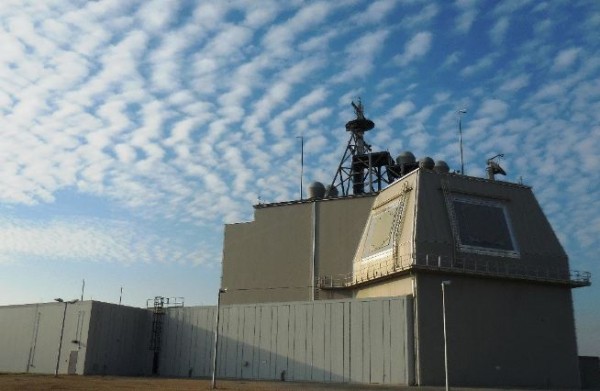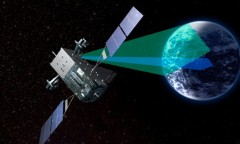By Arthur Dominic J. Villasanta , | April 03, 2017

Aegis Ashore early warning radar station in Poland.
The strategic advantage attained by the United States' national missile defense (NMD) system shielding the continental U.S. has significantly weakened the capability of Russian and Chinese intercontinental ballistic missiles (ICBMs) to launch a successful nuclear first strike.
The advantage doesn't lie with U.S. anti-ballistic missiles (ABMs) such the RIM-161 Standard Missile 3 (SM-3) of the Aegis Ballistic Missile Defense System (Aegis BMD) but with their global long-range radar systems, said Lt. Gen. Viktor Poznikhir, First Deputy Head of the Main Operations Department at the Russian General Staff.
Like Us on Facebook
Gen. Poznikhir said U.S. land-based radars in Europe that are part of the NMD can detect all possible flight trajectories of Russian ICBMs fired at the United States.
"Stationary radars of the U.S. ballistic missile early warning system detect all the potential flight trajectories of Russian ballistic missiles in the direction of the United States," said Gen. Poznikhir.
"The control boundary of the U.S. radar stations covers actually the entire territory of Russia.
"These stations are capable of tracking the flight of warheads of intercontinental ballistic missiles and submarine-launched ballistic missiles and giving target acquisition data to the radar stations of anti-missile complexes."
The use of a floating mobile radar system off Alaska (the Sea-Based X-Band Radar or SBX-1); Aegis radar stations in Romania and Poland, and U.S. Navy Aegis destroyers in Spain "considerably increases the promptness and the accuracy of target acquisition data on Russian ICBMs and sea-launched ballistic missiles and, therefore, the capabilities of intercepting them with anti-missiles," noted Gen. Poznikhir.
"The information possibilities of the U.S. ABM system are expected to grow as a result of the build-up of the low-orbit space system of detecting and tracking ballistic missiles. The data transmittance directly from a space vehicle to an anti-missile will allow the US ABM system to reach a qualitatively new level.
"Therefore, the information and reconnaissance means of the U.S. ABM system at present provide for both detecting the launch of Russian ballistic missiles, tracking them in the flight trajectory and giving target acquisition to the ABM firepower complexes for intercepting the warheads of intercontinental ballistic missiles and submarine-launched ballistic missiles."
Gen. Poznikhir estimated that "the number of (U.S.) ABM anti-missiles will reach over 1,000 in 2022 and eventually exceed the number of warheads deployed on Russian ICBMs and SLBMs (submarine-launched ballistic missiles)."
-
Use of Coronavirus Pandemic Drones Raises Privacy Concerns: Drones Spread Fear, Local Officials Say

-
Coronavirus Hampers The Delivery Of Lockheed Martin F-35 Stealth Fighters For 2020

-
Instagram Speeds Up Plans to Add Account Memorialization Feature Due to COVID-19 Deaths

-
NASA: Perseverance Plans to Bring 'Mars Rock' to Earth in 2031

-
600 Dead And 3,000 In The Hospital as Iranians Believed Drinking High-Concentrations of Alcohol Can Cure The Coronavirus

-
600 Dead And 3,000 In The Hospital as Iranians Believed Drinking High-Concentrations of Alcohol Can Cure The Coronavirus

-
COVID-19: Doctors, Nurses Use Virtual Reality to Learn New Skills in Treating Coronavirus Patients










